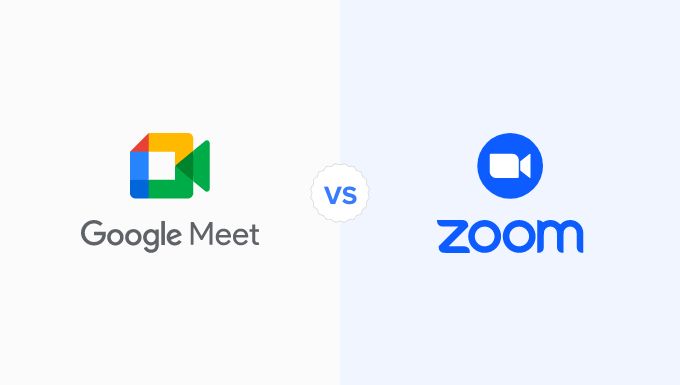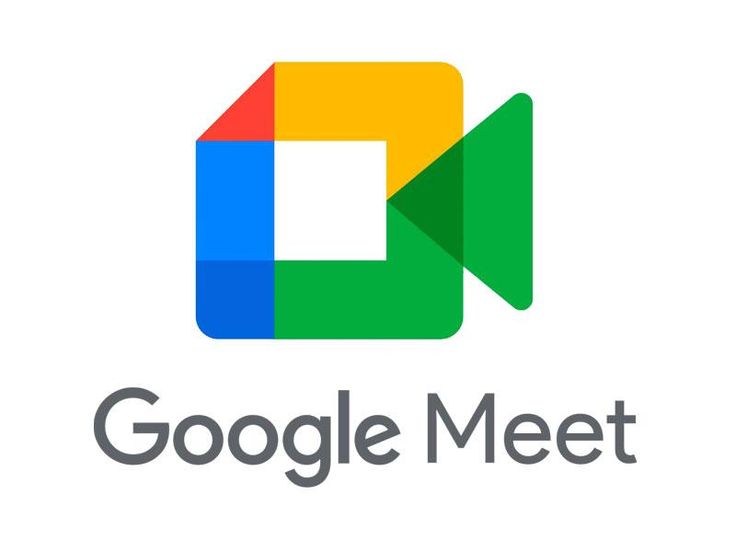When choosing between Zoom and Google Meet, the devil is in the details. Both platforms handle video conferencing well, but their feature sets, pricing models, and integration capabilities differ significantly. This comprehensive feature-by-feature comparison will help you understand exactly what each platform offers and which one aligns better with your team’s specific needs.

Zoom vs Google Meet: Platform Overview
Zoom positions itself as the dedicated video conferencing specialist, offering extensive meeting features and customization options built specifically for professional video communication.

Google Meet takes a more integrated approach, serving as Google’s video conferencing solution that seamlessly connects with the broader Google Workspace ecosystem.
Core Video Features
Video Quality and Performance
| Feature | Zoom | Google Meet |
| Maximum video resolution | 1080p HD | 1080p HD |
| Frame rate | Up to 30fps | Up to 30fps |
| Bandwidth optimization | Excellent adaptive quality | Good adaptive quality |
| Low-light performance | Superior with Studio Effects | Basic auto-adjustment |
| Video filters/effects | Extensive (Studio Effects, AR) | Basic (background blur, filters) |
| Touch-up appearance | Advanced skin smoothing | Basic touch-up |
Performance verdict: Zoom delivers consistently better video quality, especially in challenging conditions like low bandwidth or poor lighting.
Audio Features
| Feature | Zoom | Google Meet |
| Audio quality | Superior echo cancellation | Good noise suppression |
| Music/sound optimization | High-fidelity audio mode | Standard audio processing |
| Background noise suppression | Advanced AI-powered | Good but less sophisticated |
| Stereo audio | Supported | Supported |
| Audio transcription | Available (paid add-on) | Built-in live captions |
Audio verdict: Zoom offers superior audio processing, while Google Meet provides better accessibility with built-in captions.
Meeting Capacity and Limits
Participant Limits
| Plan Level | Zoom | Google Meet |
| Free | 100 participants (40-min limit) | 100 participants (60-min limit) |
| Basic paid | 100 participants (unlimited time) | 100 participants (unlimited time) |
| Business | 300 participants | 150 participants |
| Enterprise | 500-1,000 participants | 250-500 participants |
| Large meetings | Up to 1,000 (add-on) | Up to 250 (Workspace Enterprise) |
Meeting Duration
| Plan | Zoom | Google Meet |
| Free | 40 minutes (group), unlimited (1-on-1) | 60 minutes (group), unlimited (1-on-1) |
| Paid plans | Unlimited | Unlimited |
| Meeting timeout | Host controls | Automatic with warnings |
Capacity verdict: Zoom supports larger meetings and offers more flexibility for enterprise-scale events.
Meeting Management Features
Scheduling and Calendar Integration
| Feature | Zoom | Google Meet |
| Google Calendar | Third-party integration | Native integration |
| Outlook integration | Native plugin available | Third-party integration |
| Recurring meetings | Advanced scheduling options | Basic recurring options |
| Meeting templates | Extensive template system | Limited template options |
| Instant meetings | One-click start | One-click start |
| Meeting links | Persistent Personal Meeting ID | Dynamic meeting links |
Host Controls
| Feature | Zoom | Google Meet |
| Participant management | Advanced controls | Basic controls |
| Waiting room | Highly customizable | Basic waiting room |
| Meeting lock | Multiple security options | Basic meeting lock |
| Remove participants | Instant removal with options | Basic removal |
| Mute controls | Selective muting, mute all | Basic mute controls |
| Screen sharing control | Granular permissions | Basic sharing controls |
Management verdict: Zoom provides significantly more sophisticated meeting management and host controls.
Collaboration Features
Screen Sharing
| Feature | Zoom | Google Meet |
| Multiple screen sharing | Yes, with annotation | Limited multi-sharing |
| Application sharing | Specific app sharing | Full screen or specific apps |
| Annotation tools | Comprehensive annotation | Basic pointer and drawing |
| Remote control | Full remote control | View-only |
| Mobile screen sharing | Full mobile sharing | Basic mobile sharing |
Interactive Features
| Feature | Zoom | Google Meet |
| Breakout rooms | Advanced management, pre-assignment | Basic breakout rooms |
| Polls | Built-in polling with results | Third-party integration needed |
| Reactions | Emoji reactions, applause | Basic emoji reactions |
| Hand raising | Virtual hand raising | Virtual hand raising |
| Chat | Rich chat with file sharing | Basic chat functionality |
| Q&A | Dedicated Q&A feature | Chat-based questions |
Whiteboard and Visual Collaboration
| Feature | Zoom | Google Meet |
| Built-in whiteboard | Zoom Whiteboard | Basic whiteboard |
| Collaborative editing | Real-time collaboration | Limited collaboration |
| Template library | Extensive templates | Basic templates |
| Export options | PDF, image export | Limited export options |
| Integration | Standalone and in-meeting | In-meeting only |
Collaboration verdict: Zoom offers more comprehensive collaboration tools, while Google Meet focuses on simplicity.
Recording and Storage
Recording Capabilities
| Feature | Zoom | Google Meet |
| Local recording | Available (paid plans) | Not available |
| Cloud recording | Available with transcription | Available |
| Recording quality | Up to 1080p | Up to 1080p |
| Audio-only recording | Supported | Supported |
| Auto-transcription | Available (additional cost) | Available |
| Recording storage | Zoom cloud or local | Google Drive |
Storage and Sharing
| Feature | Zoom | Google Meet |
| Storage location | Zoom cloud storage | Google Drive |
| Storage limits | Plan-based limits | Google Drive storage limits |
| Sharing controls | Granular sharing permissions | Google Drive sharing |
| Download options | Full download capability | Download to Drive |
| Retention policies | Admin-controlled retention | Google Workspace retention |
Recording verdict: Zoom offers more flexible recording options, while Google Meet provides better integration with existing Google storage.
Mobile Experience
Mobile App Features
| Feature | Zoom | Google Meet |
| App quality | Excellent, feature-rich | Good, streamlined |
| Data usage | Optimized for mobile data | Runs on mobile data |
| Offline capabilities | Limited offline features | Requires an internet connection |
| Cross-platform | Consistent across platforms | Consistent across platforms |
| Background app behavior | Stable background operation | Good background operation |
Mobile-Specific Features
| Feature | Zoom | Google Meet |
| Virtual backgrounds | Full mobile support | Limited mobile support |
| Mobile screen sharing | Full screen sharing | Basic screen sharing |
| Picture-in-picture | Supported | Supported |
| Mobile annotation | Touch-based annotation | Limited mobile annotation |
| Cellular data optimization | Advanced optimization | Good optimization |
Mobile verdict: Zoom provides a more feature-complete mobile experience with better performance optimization.
Integration and Ecosystem
Google Workspace Integration
| Feature | Zoom | Google Meet |
| Gmail integration | Third-party add-on | Native integration |
| Google Calendar | Plugin required | Seamless integration |
| Google Drive | Third-party integration | Native file sharing |
| Google Docs/Sheets | External integration | Real-time collaboration |
| Google Chat | Separate platforms | Integrated experience |
Third-Party Integrations
| Feature | Zoom | Google Meet |
| App marketplace | 1,000+ integrations | Limited native integrations |
| CRM integration | Salesforce, HubSpot, others | Basic CRM connections |
| Project management | Asana, Trello, Monday.com | Google Workspace tools |
| Productivity tools | Slack, Microsoft Office | Google Workspace focus |
| Developer APIs | Comprehensive API ecosystem | Good but limited APIs |
Integration verdict: Google Meet wins for Google Workspace users, while Zoom offers broader third-party integration options.
Security and Privacy
Security Features
| Feature | Zoom | Google Meet |
| End-to-end encryption | Available for all meetings | Available |
| Meeting passwords | Required by default | Optional |
| Waiting room | Highly customizable | Basic implementation |
| Admin controls | Comprehensive admin panel | Google Admin console |
| Data encryption | AES 256-bit encryption | AES 256-bit encryption |
Compliance and Governance
| Feature | Zoom | Google Meet |
| GDPR compliance | Compliant | Compliant |
| HIPAA compliance | Available (Business+) | Available (Workspace) |
| SOC 2 compliance | Type II compliant | Type II compliant |
| Data residency | Multiple regions | Google’s global infrastructure |
| Audit logs | Comprehensive logging | Google Workspace audit |
Security verdict: Both platforms offer robust security, with slight advantages in different areas based on existing infrastructure.
Pricing and Value
Pricing Structure
| Plan | Zoom | Meet |
| Free | 40-minute group meetings | 60-min group meetings |
| Basic paid | $14.99/user/month | $6/user/month (Workspace) |
| Business | $19.99/user/month | $12/user/month (Workspace) |
| Enterprise | $19.99-24.99/user/month | $18-25/user/month (Workspace) |
Value Proposition
Zoom value:
- Dedicated video conferencing platform
- Advanced meeting features
- Extensive customization options
- Superior video quality
Google Meet value:
- Integrated with Google Workspace
- Lower cost for basic functionality
- Simplified user experience
- Better for Google ecosystem users
Advanced Features
AI and Automation
| Feature | Zoom | Google Meet |
| AI meeting summaries | Available (add-on) | Limited availability |
| Smart noise cancellation | Advanced AI processing | Good noise suppression |
| Auto-framing | Available with supported hardware | Limited availability |
| Live transcription | Available (paid feature) | Built-in live captions |
| Smart scheduling | AI-powered scheduling assistant | Google Calendar intelligence |
Webinar and Events
| Feature | Zoom | Google Meet |
| Webinar capacity | Up to 10,000 attendees | Up to 100,000 (YouTube Live) |
| Registration system | Built-in registration | Third-party integration |
| Attendee management | Comprehensive controls | Basic attendee management |
| Q&A functionality | Advanced Q&A system | Chat-based questions |
| Analytics | Detailed webinar analytics | Basic analytics |
Advanced features verdict: Zoom offers more sophisticated features for professional use, while Google Meet provides better integration and simplicity.
Performance and Technical Requirements
System Requirements
| Requirement | Zoom | Google Meet |
| Desktop CPU | Minimal requirements | Minimal requirements |
| RAM usage | Moderate resource usage | Light resource usage |
| Browser support | Limited web functionality | Full browser functionality |
| Bandwidth | Optimized for low bandwidth | Requires stable connection |
| Operating systems | Windows, Mac, Linux, mobile | Requires a stable connection |
Network Performance
| Metric | Zoom | Google Meet |
| Minimum bandwidth | 1 Mbps up/down | 1 Mbps up/down |
| Recommended bandwidth | 3 Mbps up/down | 3.2 Mbps up/down |
| Adaptive quality | Excellent adaptation | Good adaptation |
| Connection stability | Superior stability | Good stability |
| Global infrastructure | Optimized global network | Google’s global network |
Use Case Recommendations
Choose Zoom when:
- Video quality is paramount
- You need advanced meeting management features
- You host large meetings or webinars regularly
- You require extensive customization options
- You use diverse software ecosystems
- You need comprehensive breakout room functionality
Choose Google Meet when:
- You’re already using Google Workspace
- You prioritize simplicity and ease of use
- You need seamless calendar and email integration
- Cost is a primary concern
- You prefer browser-based solutions
- You need basic video conferencing without complexity
Implementation Considerations
For IT Teams
Zoom deployment priorities:
- Network optimization for video traffic
- User training on advanced features
- Security policy configuration
- Integration setup with existing tools
Google Meet deployment priorities:
- Google Workspace integration optimization
- User training on the Google ecosystem
- Browser compatibility testing
- Calendar and email workflow setup
Migration Planning
Moving to Zoom:
- Focus on training for advanced features
- Set up integrations with existing tools
- Configure security and admin policies
- Plan for increased video quality benefits
Moving to Google Meet:
- Simplify workflows with Google integration
- Train users on the streamlined interface
- Optimize Google Workspace collaboration
- Reduce complexity in meeting management
Future Roadmap Considerations
Zoom’s Direction
- Enhanced AI features for meeting intelligence
- Improved collaboration tools
- Better mobile experience
- Expanded ecosystem integrations
Google Meet’s Evolution
- Deeper Google Workspace integration
- Enhanced video quality improvements
- Better mobile functionality
- Expanded enterprise features
The Bottom Line
The choice between Zoom and Google Meet ultimately depends on your specific needs and existing infrastructure:
Zoom excels for organizations that prioritize video quality, need advanced meeting features, and want extensive customization options. It’s a better choice for companies that host frequent large meetings, webinars, or need sophisticated collaboration tools.
Google Meet is ideal for teams already invested in Google Workspace who value simplicity, cost-effectiveness, and seamless integration. It’s perfect for organizations that need reliable video conferencing without complexity.
Consider your team’s actual usage patterns, existing software ecosystem, and long-term collaboration needs when making this decision. Both platforms are capable of handling standard video conferencing needs, but their strengths in specific areas may make one clearly better for your particular use case.




